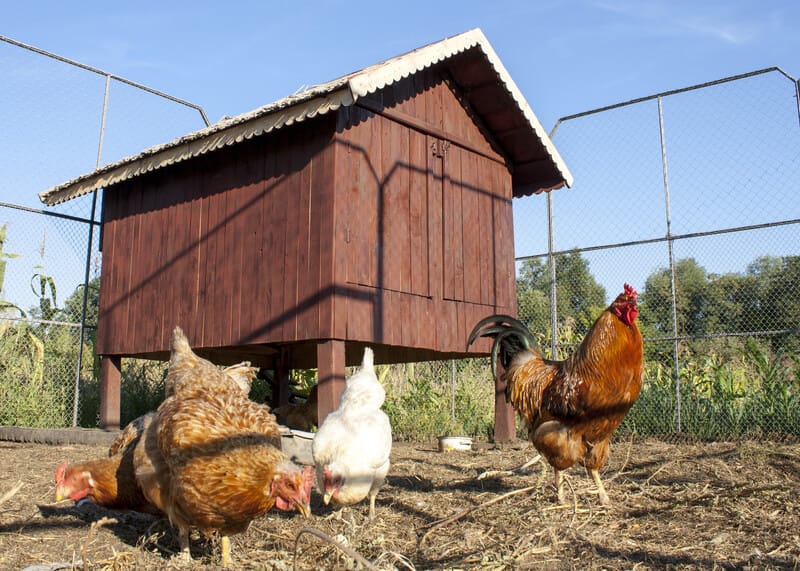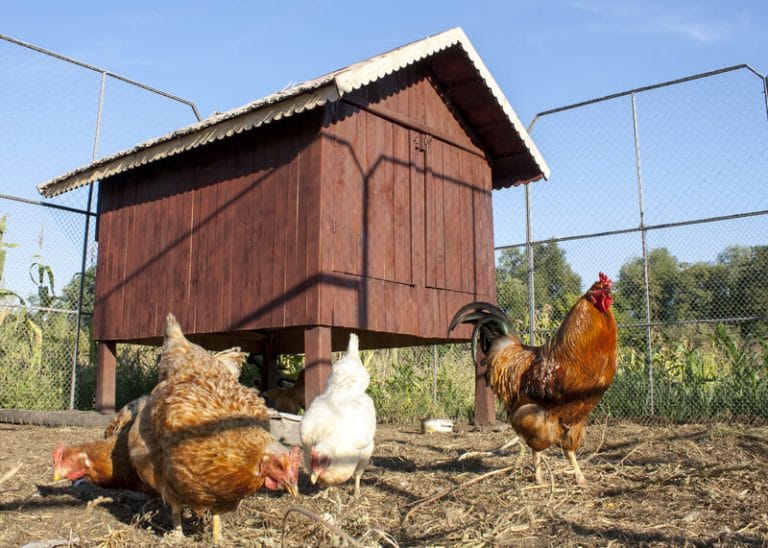This entry was posted on 21 April 2017 in Keeping Chickens.
Every once in a while we get the opportunity to welcome guests to our blog to talk about their experiences working with and caring for our beloved friends, and so we are proud to welcome Sam, a chicken farm assistant from Long Buckby. Over to you Sam…
Today I will be talking about the time I spent working on a huge and eggcellent chicken farm for over two years and what truly goes on in the background. I will also be describing the one of a kind experience that I’ve had on the farm that may involve thought-provoking things that you’ve never heard about.
First, it’s best getting started with briefly knowing the layout of the farm and the different buildings. It’s a relatively large farm with five free range sheds and three barns, don’t think of these as your average sized shed; these sheds/barns are practically warehouses! It’s definitely larger than a chicken coop – these warehouses are big enough to hold more than a thousand chickens each.
The difference between the free-range sheds and the barns is that on the side of the free-range sheds there are a few wooden doors to open (which is opened by us first thing in the morning) to let all the chickens outside in huge fields surrounded by an electric fence for any predators trying to sneak in. Don’t worry no chickens were harmed by this fence!
The chickens eat grains and seed, the food is delivered by a lorry which transfers it into a massive silo outside each shed. An automated system moves the food into a conveyer belt system that transfers up and down each shed to keep the chickens well fed. Water is available from a pipe which enters these small areas for the chickens to peck at to allow water to flow down.
I was originally meant to be a part timer, however, I slowly turned into a full timer who only worked on the weekends, weird right? As well as only working weekends, the hours I would work would be from 7:30 am to usually around 12:30 pm – a quick day but very early! My job responsibilities included:
Don’t worry I won’t be getting to technical with how everything works but it is quite fascinating! How the egg collecting works is firstly, the chickens lay their eggs in the nest area that is available in each shed. These nests allow the eggs to slowly fall into a conveyor belt underneath and then the eggs flow to a table to where I would be working.
To control the conveyor belt, there is a speed control as well as an off and on button. This is to make sure that the table I work on isn’t absolutely cluttered with eggs and that none fall off to the sides (which tends to happen a lot just at the time you’re not looking!).
So, what do I do with all these eggs arriving to the table? I place 32 eggs into these blue plastic trays, six of these trays make up a stack of eggs; which is afterwards placed onto a pallet for a grand total of 48 stacks – that’s a lot of eggs! Lastly a lorry comes around once a week to load up these pallets from each shed on the farm and I would begin the next one.
All the farm worker had to do is stand at the table all day letting the eggs come to them, it is very simple but it worked out great as my first job. It wasn’t as simple as throwing all the eggs into the blue tray and that’d be that. You had to bear in mind about quality control, it’s the main challenge of ensuring the eggs you are packaging are all in good condition. The eggs that do not count as good condition are as follows:

Usually you’ll get a whole load of eggs that are covered in manure or blood – gross, right? This wouldn’t always be the case as most of the times the eggs will be shielded in dirt. These types of eggs are placed into a basket and then into a bucket of warm water and soap. After this the machinery under the bucket makes it shake left to right which would be left for 5 minutes, making it an efficient way to automatically clean multiple eggs at a time.
These types of eggs are the worst. Most of the time you will have entirely shattered eggs coming down the conveyor belt which would sometimes spread the yolk inside all over the table that I work on. You should have quick reactions and be able to stop the conveyor belt fast, place any shattered eggs into a large bucket underneath the table, clean up the mess on the table and continue on.
These kinds of eggs are ones that have a relatively small crack or hole in them. Every now and then a wrinkled egg will appear which also counts as second hand eggs. You should have a good eye and pay really close attention for these eggs as they can be easy to miss! These types of eggs are placed into a grey fabric tray and as mentioned before, becomes a stack of 6 of these trays. If I manage to get a stack done it is placed onto the pallet along with the good eggs.
There have been so many unique and hilarious moments that happen as I am doing the morning and afternoon walk round the sheds. Every now and then the chickens will randomly start fighting each other, watching chickens jump up and down, flap their wings like crazy and peck at one another is easily one of the most entertaining experiences I’ve had being a chicken farmer. I can pretend that I’m the bouncer having to get in between the chickens and breaking up the fights. However, I would be a terrible bouncer because I would always stand there giggling to myself.
There is still a load of information about the farm which I haven’t talked about, so if you have any questions, leave a comment down below and I would love to share my experiences with you! For any other help and advice please do feel free to message Eggshell Online on their Twitter and Facebook.

« Choosing the right housing for your chickens
The ISA Brown Hens: Everything you need to know about this fantastic Chicken »